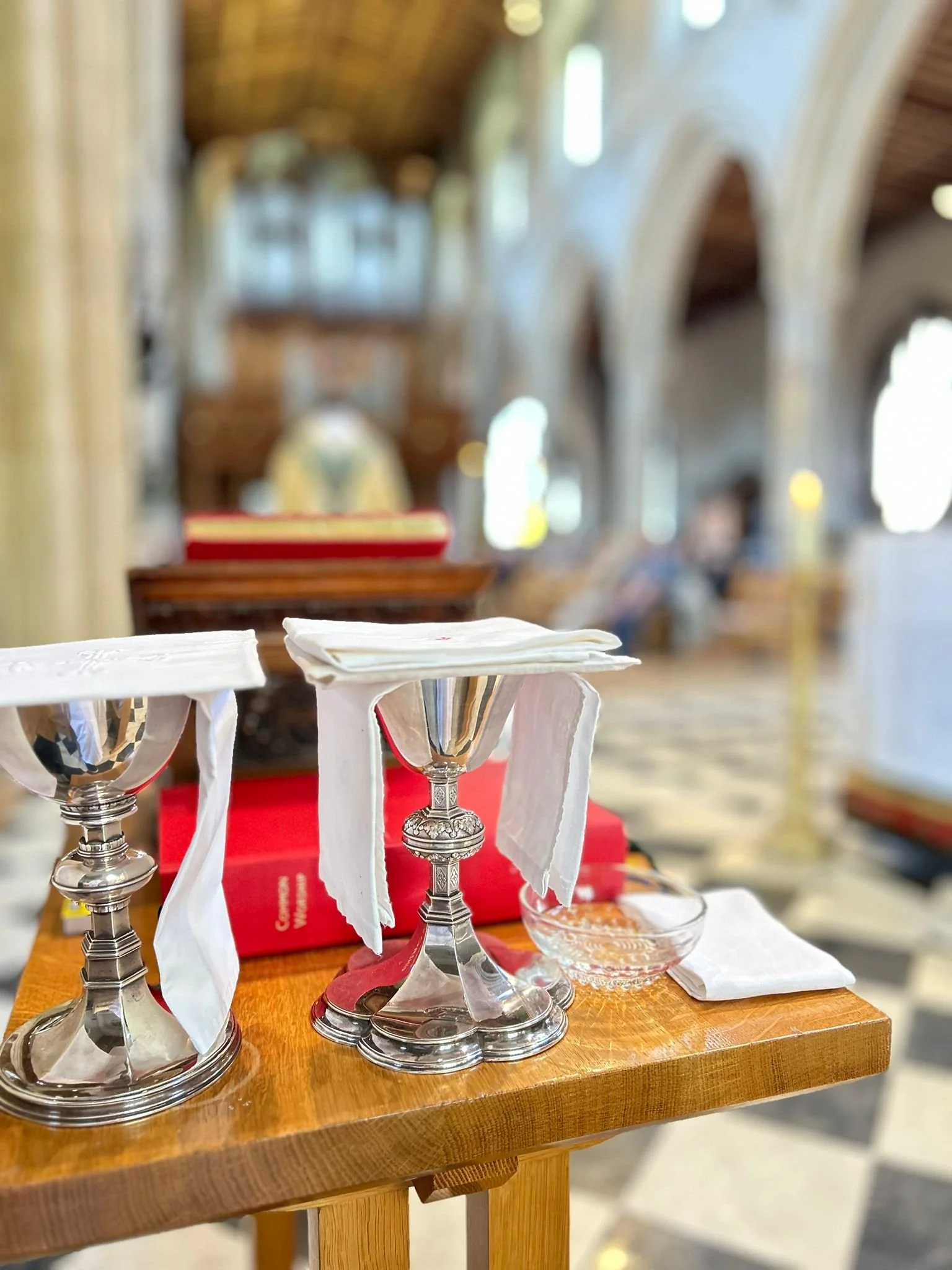The Holy Eucharist
What?
Why?
When?
How?
Here are some ‘whys and wherefores’ about our worship in a booklet at the back of St Giles’ Church and on our website.
It is worth asking the question - why do we do what we do in church? And why do we do it in the way we do it?
Nothing is by accident, well, not much.
Our liturgy (the worship of the people of God together in church) is the most important thing we do together. It has been handed on to us by those who have gone before us. We celebrate the Holy Eucharist together in our generation, and we hand this gift on. As a local church community, the Eucharist is the source and summit of our life together, until we get to heaven.
Let’s explore this amazing gift together.
If you’re not familiar with all this, ‘come and see’ (as Jesus says to people in the Gospels). If you’re already at home in the Eucharist, what new depths might you explore? If you’d like to contact one of the clergy and ask more about all this in person, please do via our website.
The liturgy of the Eucharist is always ancient and fresh, always the same, and always new. These pages contain the outward signs of God at work in the world. It is first and foremost a life-embracing, life-changing adventure that all people (no matter who you are) are invited to embrace.
Just the Bible, bread and wine and a few folks on a Sunday morning? Look closer…
The Procession
We assemble each Sunday. It is what Christians do - it is in our DNA to assemble on the Resurrection Day.
Church, from the Greek ‘Ecclesia’, means ‘assembly’.
God draws us together.
And then from amongst our midst - the entrance of the ministers in procession (even just a procession of one, sometimes!) This isn’t just about pomp. It has a theological value too.
Processions in Church remind us that we are ‘a people on the move’. We are sojourners, pilgrims through this life, on our way home to heaven.
The stories of the Exodus and the Promised Land aren’t limited to the Old Testament. Quite the reverse, they are there because they are to be echoed from the pages of the Old Testament into all human life.The Procession at the beginning and end of each Eucharist or other service signifies this, and reminds us of our true nature.
Vesture
Very early on in the ‘Jesus movement’ Christians began to ‘dress up’ for worship. The poshest things they could think of were the Roman senatorial robes. So they inspired the priestly eucharistic vestments still used today. Each has a significance, and is accompanied by a special prayer when put on.
The alb (meaning white) echoes Revelation (7.14) speaking of our Baptismal identity - those robed in white, washed in Christ’s blood.
The stole is a symbol of priestly authority. The girdle is chastity and temperance. The amice is a spiritual helmet. The chasuble is God’s all-encompassing love.
Incidentally, the great and good of Rome would often be preceded in the streets by acolytes with torches and a censer burning sweet-smelling incense to purify the way through the smelly streets. Of course on our altar is the vision of the angels swinging censers before God, from both the Old Testament (Exodus 30), and Revelation (chapter 8) in the New Testament. This is an honour Christians came to give the Gospel book and processions in church. They wanted to give God their best after all. That’s why our vestments are beautiful too, and our church building for that matter; purposely so. We give God our best.
Vestments are not about priests dressing up! They help the priest’s individuality take a back seat as s/he simply performs their role in the assembly. It’s about Jesus’ priesthood, not any ordained clergyperson taking centre stage. For as long as the priest is celebrating the Eucharist s/he is ‘in persona Christi’ (in the person of Christ) - it isn’t about them, it’s about Jesus, in whose place they stand to administer the Sacraments to His people. That’s why we stand as clergy process in and out, and some people bow as the celebrant passes, not because of the person walking in, but because one of the ways Jesus chooses to minister to us is through priests.
